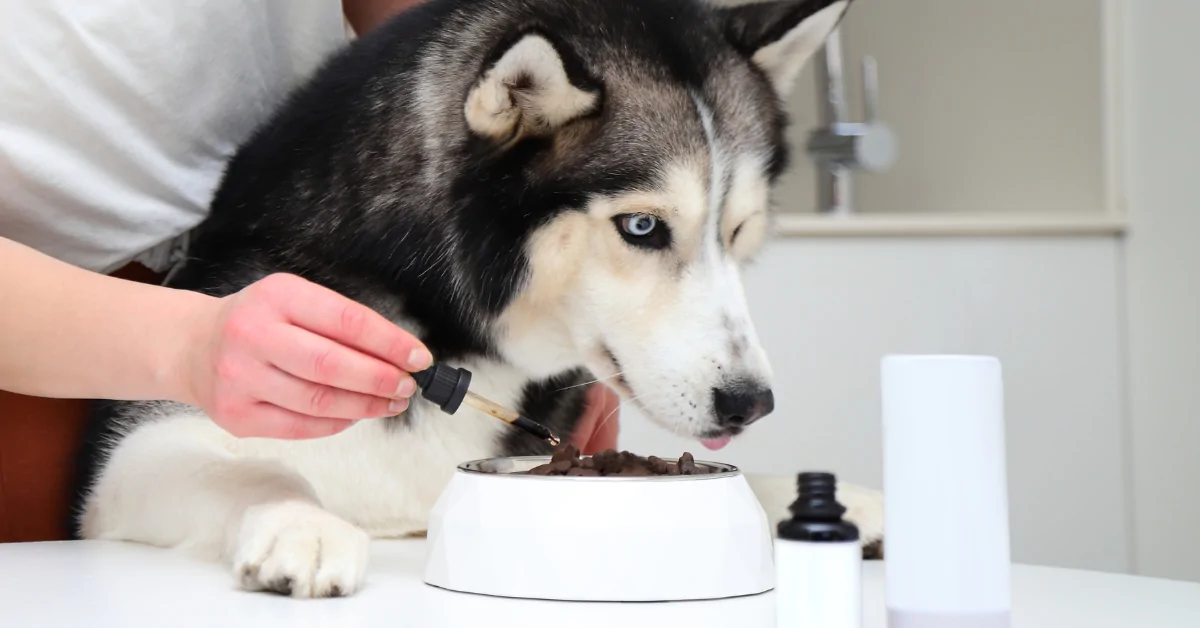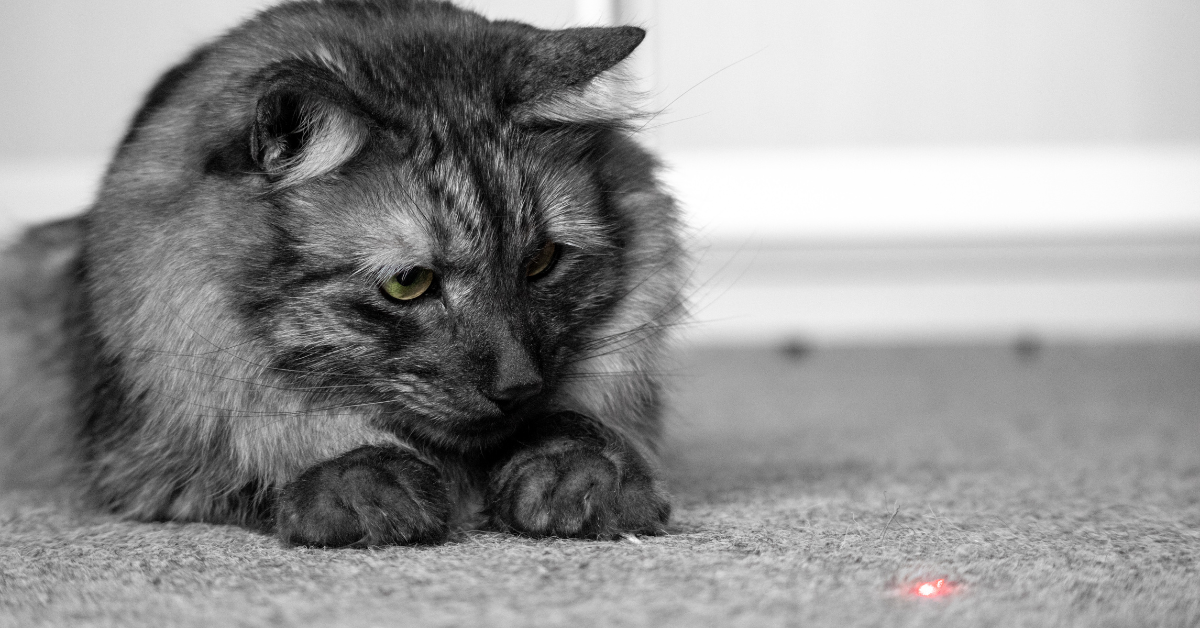
Blood in cat pee in a serious matter
Imagine this: you’re scooping the litter box and you notice drops of blood mixed in with the typical clumps. Your eyes go wide. Your heart races a bit. You may even start to panic as you wonder about what this could mean for Mr. Whiskers and his health.
What’s even more alarming is how nonchalant your cat appears. While you’re sitting there panicking over what constitutes a medical emergency, your kitty is just be happy as can be, sunning themselves on their perch. So what does this mean? Should you worry if you find blood in your cat’s litter box? Should you wait and see?
Before we go any further, we feel the need to be right upfront about something. Seeing blood in your cat’s urine is enough of an issue to schedule a visit, sooner rather than later, with your vet. This is because blood in your cat’s urine can be due to a variety of issues. You want to make sure you don’t leave anything serious undetected.
What is it Called When Cats Pee Blood?
When your cat’s urine contains traces of red blood cells, the diagnosis can be hematuria. But, when you can see flecks of black, brown, red, or pink in your cat’s urine with your naked eye, this is called gross hematuria (and we agree – it is gross). On the other hand, some forms of hematuria are only detectable with highly advanced equipment; this is called microscopic hematuria.
Causes of Blood in Cat Urine
It’s important to remember that blood in your cat’s urine is usually a symptom of an underlying condition, rather than being a specific ailment. But noticing bloody urine isn’t sufficient evidence to come to a proper diagnosis. In truth, unfortunately, a variety of diseases and conditions can cause your cat to pee blood. That means, once it’s noticed, blood in your cat’s urine is serious and warrants investigation by a veterinarian.
Urinary Tract Infections Causing Blood in Cat Pee

A vist to the vet is your #1 priority
A visit to your Vet is your #1 priority. Urinary tract infections arise after bacteria makes its way from the urethra up into the bladder. The microorganisms then begin to reproduce within the urine that’s stored inside. Inflammation of the bladder follows right on downstream into the urethra. This inflammation causes spasms in your cat’s urethra and makes them feel the urge to pee more often. The result is irritation in the lining of your cat’s bladder along with the urethra which can result in mild bleeding.
Luckily, urinary tract infections are a relatively uncommon ailment for most cats. They tend to affect mostly senior cats who are more than ten years old and cats who suffer from diabetes. The presence of certain small bladder stones, called uroliths, can increase your cat’s risk of developing a urinary tract infection. The uroliths may also lead to irritation of the lining of the organs that facilitate your cat’s urination.
Pandora Syndrome Causing Blood in Cat Pee
Much more common than urinary tract infections is Pandora Syndrome, otherwise known as Feline Idiopathic Cystitis. Pandora Syndrome is the most common form of Feline Lower Urinary Tract Disease (FLUTD). FLUTD is a broad term used to describe a range of conditions that affect the lower portion of a cat’s lower urinary tract. As the name suggests, Pandora Syndrome has no easily identifiable single cause. Instead, it’s a term that’s used to describe varying degrees of inflammation of the bladder or urethra that are caused by many different conditions.
It is important to note that Pandora Syndrome is a diagnosis of exclusion. By that we mean, that it is only diagnosed once all other common causes of your cat’s symptoms are eliminated. Unfortunately, Pandora Syndrome is often a chronic condition that waxes and wanes in severity. Consequently, it makes for a very frustrating disorder for cats, pet owners, and veterinarians.
Physical Obstructions in the Urinary System Causing Blood in Cat Pee

Your cat could have an urinary obstruction
Your cat could have a urinary obstruction. Mostly occurring in male cats (though not exclusive to them by any means), urinary obstructions are a self-explanatory condition. It’s when something is literally preventing your cat from being able to effectively empty their bladder. Like with many diseases related to the urinary system, urinary obstructions can come from a variety of underlying issues. These include swelling caused by the inflammation in the urinary tract, urethral plugs, urethral or bladder stones, urinary strictures, or even tumors.
However, make no mistake: a urinary obstruction is a life-threatening emergency to tackle immediately. A cat with an untreated urinary obstruction is at significant risk of mortality. This happens because being unable to pee causes a buildup of urine within the kidneys. This buildup of waste products in the kidneys leads to kidney failure which can kill you cat. If you notice your cat is really straining to pee and only produces a little blood instead of…well, pee, take them to a vet immediately.
Bladder or Urethral Stones Causing Blood in Cat Pee
Stones can develop anywhere along a cat’s urinary tract but will most often form in their bladder or urethra. Stones form via the accumulation of minerals, crystals and other natural substances within an organ. Once they compact and form into a stone, these pesky little things start rubbing against the walls of the bladder or urethra. As the stones move around in the bladder or down through the urethra, they can cause inflammation, irritation, and eventually bleeding.
Some cats who are afflicted by bladder or urethral stones may have blood continually show up and disappear in their urine. This can make it especially hard for their owners to know if something is wrong and whether their cat requires veterinary attention.
Malignant Kidney Neoplasm Causing Blood in Cat Pee

Loss of body weight and appetite could be a warning sign
Neoplasia is a catch-all term to describe a number of different abnormal growths that can occur in cats. These growths, caused by an uncontrolled division of cells, live longer and divide faster than normal cells. Neoplasms can be either benign or malignant, though it’s common to see the terms neoplasia, tumor, and cancer used interchangeably. The key difference between benign and malignant neoplasms is that benign neoplasms don’t invade normal tissue. Whereas malignant neoplasms destroy the tissue around them.
Neoplasms can occur anywhere in the body, and can even spread to distant regions (also known as metastases). When a neoplasm forms in a cat’s kidneys, it can cause a sudden and sharp reduction in kidney function. After it first forms, its blood vessels are fragile and may begin to lightly bleed. As it grows and invades surrounding tissues, it may grow into nearby blood vessels and the bleeding may worsen. This blood will work its way down from the kidneys into the bladder, where it will mix with urine being produced. Besides causing blood in the urine, malignant neoplasms can also cause weight loss, difficulty breathing, loss of stamina and a loss of appetite.
How is Blood in Cat Urine Diagnosed?
The first step in obtaining a diagnosis of why your cat is peeing blood is a complete physical examination. During this procedure, your vet will examine your cat’s belly, listen to their heart and lungs, and inspect their genitals and urethra. They may also check for any physical abnormalities like bumps or tumors. The physical exam will also clue your vet into your cat’s body condition score and physical fitness levels.

Vet giving cat a physical exam
After the physical exam concludes, your vet will ask you a series of questions aimed at better understanding of your cat’s medical history, home life, and stress levels. The reason for this is that, like all animals, cats can respond psychosomatically to external stressors. If something at home is causing them to feel anxious, their stress can physically manifest itself in the form of urinary troubles.
Have Your Cat Tested
Next, your vet may order a series of labs or tests to gain deeper insight into what is causing blood to appear in your cat’s urine. These might include a urinalysis, urine culture, complete blood count (CBC), and imaging.
Urinalysis is a lab procedure that’s used to discover if any crystals, bacteria, red blood cells, white blood cells, cancer cells, or even sugar are present in your cat’s urine. Likewise, your vet can use urine culture tests to uncover bacteria in your cat’s urine if they suspect a bacterial infection. They may also conduct a complete blood count with a chemistry profile to gauge how well your cat’s organs are working. Furthermore, this test will detect signs of heart disease, immune system disorders, or other medical conditions that might cause bloody pee.
Imaging tests like x-rays or abdominal ultrasounds can also reveal whether bladder or urethral stones or neoplasms are to blame. Even if growths or tumors aren’t the cause, these imaging tests are still useful in detecting inflammation in organs involved in urination.
How is Blood in Cat Urine Treated?
The exact plan to treat blood in your cat’s urine will be entirely dependent on what the problem is. There is a range of treatments that may be recommended, and they vary greatly in intensity. For example, a simple course of antibiotics might be the answer if a bacterial infection is the cause of your cat’s bloody urine.

Vet examing cat’s belly
However, something like a urethral blockage will necessitate surgery to properly correct the issue. On the other hand, some severe-sounding conditions like bladder or urethral stones will likely resolve with prescription food or medication. These meds will probably dissolve the smaller stones. Larger stones, however, may still require surgical removal.
If:
- Neoplasm is the cause, your veterinarian will likely request to take a biopsy of the site to determine whether or not it is cancerous.
- It’s determined to be benign, they will likely want to monitor the area in the foreseeable future to detect and react to any changes.
- The site is cancerous, treatment may involve surgery, chemotherapy, radiation therapy, immunotherapy, or palliative care.
Idiopathic causes for bloody urine like Pandora Syndrome, as well as more common disorders like Feline Lower Urinary Tract Disease, will require a treatment plan. Your vet will assemble steps focused on comfort management and lifestyle modification. She may prescribe pain medication to deal with any discomfort caused by the inflammation or irritation. In conjunction, she may also recommend using feline pheromone diffusers to help your cat relax. These may minimize the chance of stress for your cat. According to research, cats are literally so self-absorbed that they calm down when they smell other cats, isn’t that interesting?
How to Care For Your Cat with Hematuria at Home
Once you’re back home from the vet’s office, you’ll want to monitor your cat closely for the next couple of weeks. Keep them inside where you can keep an eye on them. Even more, make sure that they’re eating properly and drinking plenty of fluids. Additionally, keep them on a regular schedule with any prescription medications. If the medication is an antibiotic, remember to make them finish the entire course regardless of whether or not they appear to be getting better.

Have a comfortable place for your cat to rest
There are a number of environmental and routine changes that you might want to consider to limit your cat’s stress and to aid in her recovery. For starters, make sure that your cat has plenty of choices in where they rest, play, drink water, eat, use the restroom, and sleep. This will minimize the chance that they come into conflict with other cats they live with. Likewise, be sure to provide adequate litter box space. Conventional wisdom dictates that you need one box for every cat, plus an extra one. Be sure to clean them daily. Cats are most fastidious, but, we don’t have to tell You that!
Keep Your Cat Hydrated
It may seem obvious, but it’s worth stating anyway: proper hydration is key in preventing urinary problems. Consider getting a circulating water fountain to encourage your cat to drink more water. And, if you haven’t already, you might want to think about switching your cat over to wet food. Not only will they appreciate the scrumptious treat, but these watery, canned delights can help prevent the formation of crystals that develop into stones. Moreover, make sure to give your cat wet food that is formulated for their specific life stage to ensure they get all of the essential nutrients and vitamins.
Lastly, it’s important to remember that seeing blood in your cat’s urine is never a symptom to dismiss. Even if your cat is otherwise behaving just fine, you need to take them to a veterinarian. Cats are masters at hiding things that are wrong until it’s just too late. Taking the time to rule out potential, treatable diseases can save your cat’s life and give you many years of great cat cuddles together!
Banixx Cat Blog
We hope you found this article helpful and if your dog ever gets any cuts, abrasions, ear infections or ringworm, we hope you keep Banixx Pet Care in mind. For more information on how to keep your cat happy and healthy, head on over to our cat page. Or hop over to our cat blog to learn about why your cat stares at you. Or on a more serious note, what to do if your cat stops drinking. Either way, we’ve got you cover.
Sources
- https://www.vetstream.com/treat/felis/diseases/hematuria
- https://emergencyvetsusa.com/cat-peeing-blood/
- https://www.thesprucepets.com/blood-in-your-cats-urine-4778199
- https://www.mspca.org/angell_services/urethral-obstruction-in-cats/
- https://vcahospitals.com/know-your-pet/kidney-failure-acute-in-cats
- https://www.pethealthnetwork.com/cat-health/cat-diseases-conditions-a-z/bladder-stones-cats
- https://www.pethealthnetwork.com/cat-health/cat-diseases-conditions-a-z/neoplasia-cats
- https://vsso.org/renal-tumors-feline
- https://www.acvs.org/small-animal/urinary-obstruction-cats
- https://petcentral.chewy.com/how-to-calm-a-cat-using-pheromones/
- https://banixx.com/blog/how-much-wet-food-should-i-give-my-cat/
Share this Post
Featured Post
Recent Posts

Managing the Mamas –Part 2 –The development process

Managing the Mamas: Part 1 – Preparing to Breed Your Mare

HOW MANY TOES?? Caring for the Polydactyl Cat

Do Dog Joint Supplements Actually Work?

Are Laser Pointers Bad for Cats? or, are they Purr-e Fun?


